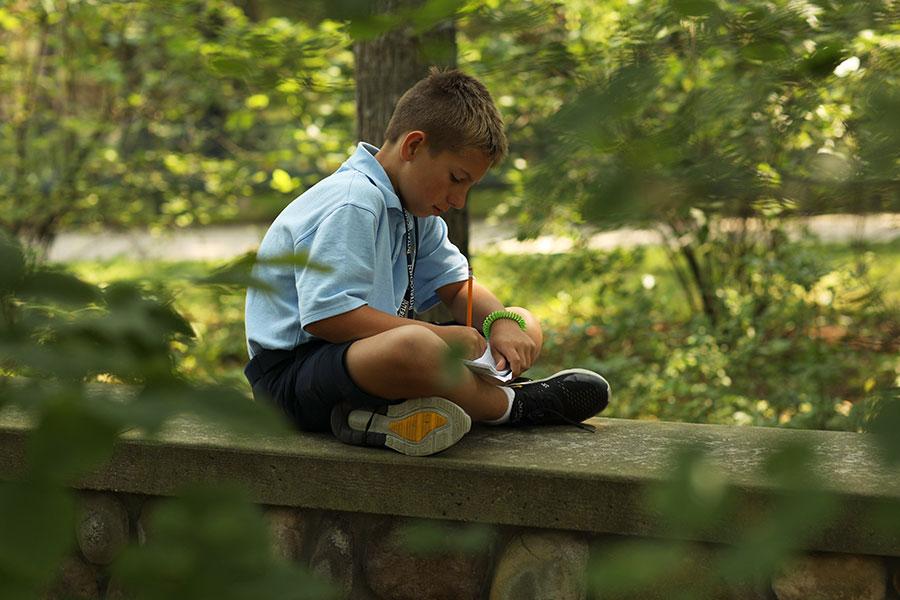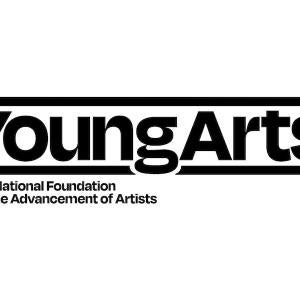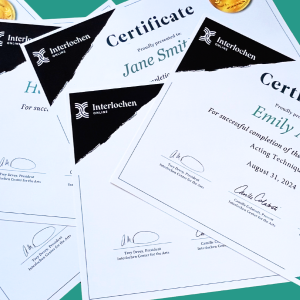Five creative writing tips for kids
Interlochen Arts Academy students Annalise Harter and Sam Haviland share their tricks for getting started as a creative writer.
In almost any household, you can find the materials you need to get started as a writer: paper, pencils, or maybe a computer. And yet, as anyone who has ever stared at a blank page or screen knows, it’s hard to create something from nothing. The endless possibilities are both tantalizing and overwhelming, and self-criticism and unfair comparisons can discourage you from even trying.
While many schools offer classes to help students get started in other art forms, creative writing is often relegated to a few assignments in an English class. To help you get started, we sat down with award-winning Interlochen Arts Academy creative writing students Sam Haviland and Annalise Harter.
Haviland, a senior, has received a number of accolades from the Scholastic Art & Writing Awards and has had her work published in the Interlochen Review, Interlochen Arts Academy’s digital art and literature journal. Haviland enjoys writing in all genres, but especially likes fiction. Harter, a junior from North Carolina, focuses on fiction and nonfiction writing. Her work has been recognized at the regional level of the Scholastic Art & Writing Awards.
Here, Haviland and Harter discuss their experiences as beginning writers, where they find inspiration, and how they stay motivated.
Tip #1: You can do it.
Sam: The great thing about writing is that anyone can be a writer. Writers are just people who like to share their thoughts and experiences, and everyone has their own thoughts and experiences. There are writers who like to write about music. There are also writers who really enjoy sharing about nature, robots, or basketball.
Tip #2: Read.
Sam: Reading is the most important thing you can do to become a good writer. Writing without reading is like exercising without eating. You just can’t do that. You have to feed your creative mind before you can put anything on the page. Of course, you don’t want to write exactly what you have read. You need to make room for your own voice and creativity to grow.
Annalise: Reading is huge as a writer, because that's your inspiration. When I was younger, I read the Little House on the Prairie series by Laura Ingalls Wilder; the Chronicles of Narnia series by C.S. Lewis was another big one for me. As a kid, my imagination was all about exploration and adventures, so I really liked reading books about children who were doing that kind of thing.
Tip #3: Don’t be overly critical of your first works.
Sam: One of the biggest challenges for writers is self-criticism. Sometimes you write something, and when you go back and read it again, you think it’s really bad. That might make you feel like quitting and never trying again. When you’re getting started, just write for yourself. Don’t write for others or write to be a good writer. Write to find out how you want to write. And if you think it’s bad? Don’t worry. It will get better as you work on it, just like anything else.
Annalise: It’s normal to think your work isn’t good or have anxiety about sharing it. That can be an obstacle for any writer, but especially for new writers. If you’re having a difficult time getting started, sometimes having a routine helps. I like to make myself hot chocolate before I write, and that works for me.
Tip #4: Listen to feedback from people you trust.
Sam: Feedback is really important. When you write something, you always see the big picture because the full idea is inside your head. Your story makes sense to you because you wrote it. But you don't know how someone else might see it. They might not make the same connections or understand it differently.
In art, we talk a lot about intention. When you write something, you have certain intentions for how it will be received by the reader. Really understanding the effects your work had on someone and how they actually understood your words is important. Feedback gives you a chance to change your work to make sure it has the effect you wanted.
When you’re ready to start sharing your work, start small. It doesn’t need to be everything all at once. One of the things I like doing at the Arts Academy is trading work because then you’re not just giving yourself over to another person and saying “Here is my work. Judge it.” Instead, it becomes more of a joint effort: you’re sharing and helping each other improve.
Annalise: A lot of times, if I’m going to share a piece in a workshop, I start by showing it to my parents because I know they’re supportive. In a workshop, we provide feedback to each other. Instead of focusing on critiquing someone else’s piece, I like to write down my first impressions. That gives us a list of things we can talk about. Maybe the writer doesn’t understand how their piece is working for the reader. Revision, for me, is a way of seeing how effective your writing can be. I don't see it as determining whether you are a good writer or a bad writer; it’s about finding ways that you can improve.
Tip #5: Look for opportunities to share your work and grow.
Annalise: Once you feel comfortable sharing and revising your work, look for other resources like competitions, which can help to keep you motivated. If you do well in competitions, it can give you a huge confidence boost. Creative writing clubs or classes can help give you some structure and introduce you to other young writers, which is really nice.
Ready to take your next step as a writer? Interlochen’s Creative Writing program offers a community where you can explore your own writing, meet other emerging writers, and learn from dedicated teachers who are also professional writers. Our faculty will guide you as you build your portfolio, submit to contests, apply to college, and hone your performance skills at public readings. Learn more at interlochen.org/creative-writing.
All students in grades 8-11 during the 2021-2022 school year are eligible to apply for the Virginia B. Ball Creative Writing Competition to win a full-scholarship to Interlochen Arts Academy! Submissions must be received by October 31, 2021.







